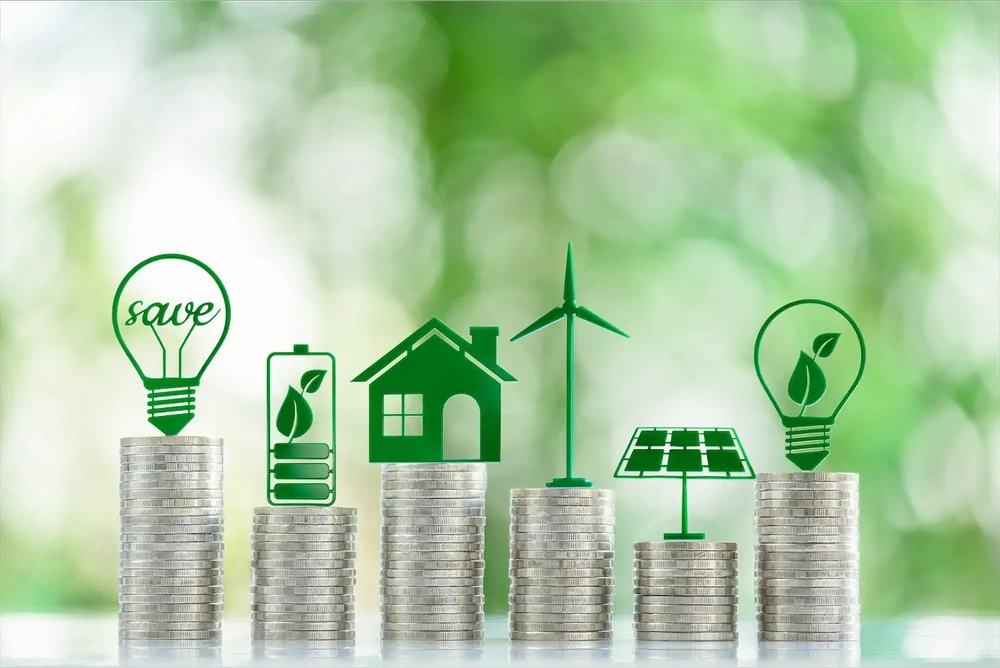Effective from January 1, 2023, the credit will be calculated as 30% of the total amount paid by the taxpayer for specific qualified expenses. These expenses include the cost of (1) installing qualified energy efficiency improvements during the year, (2) making residential energy property expenditures throughout the year, and (3) conducting home energy audits during the year.
In 2023, there are several energy tax credits available to homeowners and businesses in the United States.
These credits are designed to encourage investment in renewable energy sources, energy-efficient technologies, and other environmentally friendly practices. This guide will provide an overview of the qualifications for various energy tax credits in 2023.
Please note that this information is accurate as of 2021 and may change in the future. Always consult the IRS or a tax professional for the most up-to-date information.
1. Residential Renewable Energy Tax Credit
The Residential Renewable Energy Tax Credit offers homeowners a tax credit for the costs associated with installing eligible renewable energy systems in their primary residence or second home. In 2023, the following types of systems qualify for the credit:
– Solar panels (photovoltaic systems)
– Solar water heaters
– Small wind turbines (up to 100 kilowatts)
– Geothermal heat pumps
– Fuel cell systems
Qualifications:
– The system must be installed in a new or existing home that is your primary residence or second home (rental properties are not eligible).
– The system must be operational in the year you claim the credit.
– Solar water heaters must be certified by the Solar Rating and Certification Corporation (SRCC) or a comparable organization.
– Fuel cell systems must have a minimum efficiency of 30% and produce at least 0.5 kilowatts of electricity.
2. Nonbusiness Energy Property Tax Credit
The Nonbusiness Energy Property Tax Credit is available to homeowners who make energy-efficient improvements to their primary residence, such as:
– Insulation
– Energy-efficient exterior windows and doors
– Energy-efficient heating and air conditioning systems
Qualifications:
– The improvements must meet the ENERGY STAR program requirements.
– The credit is limited to 10% of the cost of the improvements, up to a lifetime maximum of $500.
– The home must be your primary residence, and improvements must be made on or after January 1, 2006, and before December 31, 2023.
3. Business Energy Investment Tax Credit (ITC)
The Business Energy Investment Tax Credit (ITC) is available to businesses that install eligible renewable energy systems, such as:
– Solar energy systems
– Fuel cell systems
– Small wind energy systems
– Geothermal heat pumps
– Microturbines
– Combined heat and power (CHP) systems
Qualifications:
– The system must be operational in the year you claim the credit.
– The system must meet specific performance and quality standards.
– Different types of systems have different credit rates and caps, so consult the IRS or a tax professional for the exact amount you may be eligible for.
4. Electric Vehicle (EV) Tax Credit
The Electric Vehicle (EV) Tax Credit is a federal income tax credit available to buyers of new electric and plug-in hybrid vehicles. The credit amount varies based on the capacity of the battery used to power the vehicle.
Qualifications:
– The vehicle must be new and purchased for use or lease, not for resale.
– The vehicle must be primarily used in the United States.
– The vehicle must be placed in service during the tax year you claim the credit.
– The vehicle must meet specific emission standards.
Please note that some credits may be subject to phaseouts or reductions based on the manufacturer’s sales or other factors. It’s essential to keep up to date on the latest information and consult a tax professional to ensure you receive the maximum credit for which you’re eligible.
The 2023 Homeowner’s Guide to the Energy Tax Credit
The Inflation Reduction Act signed into law in August 2022 dramatically expands the Residential Clean Energy Tax Credit starting January 1, 2023. The Act increases the credit amount from 10-30% to a flat 30% for many qualifying energy-efficient home improvements.
This guide will help you understand what expenditures qualify for the tax credit and how to maximize your savings for 2023.
Qualifying Improvements
• Energy efficient upgrades – New high-efficiency HVAC systems, furnaces, water heaters and insulation can qualify for a credit of up to $2,000. Systems must meet specific efficiency standards.
• Solar energy systems – Solar panels, batteries and solar water heaters are eligible for a 30% credit with no maximum cap.
• Home energy audits – A home energy audit that identifies recommended energy saving retrofits qualifies for a credit of up to $1,200 in 2023 and $150 in later years.
Maximizing Your Savings
• Plan projects now – Start planning and budgeting for upgrades before the end of 2022 to benefit from the higher 2023 tax credit amount.
• Stack credits – Consider improvements that qualify for multiple credits to maximize your total tax savings. For example, a new heat pump and insulation upgrade.
• Use a home energy audit – An audit can identify the most impactful projects to focus your spending on.
• Carryforward credits – Any unused portion of the credit can be used to offset future tax liability for up to 20 years.
• Consult a tax professional – Have a tax expert review your expenditures to ensure you claim the full credit you’re eligible for.
• Apply for incentives – Many states and utilities also offer rebates and incentives you can stack on top of the federal tax credit.
The new energy tax credit provides a golden opportunity for homeowners to make significant investments in energy efficiency and renewable energy upgrades while saving money on their taxes. Planning and preparing for eligible projects now will help ensure you maximize the benefit of this expanded incentive.
The revised tax credit takes effect on January 1, 2023. Expenditures made in late 2022 do not qualify for the higher 30% credit. Only projects completed and paid for in 2023 and later years will qualify.
The expanded credit is currently slated to last for 10 years through 2032. However, Congress could choose to extend it further in the future.
Qualifying projects include energy efficient upgrades like high-efficiency HVAC and water heaters, smart thermostats, insulation, metal roofs and home energy audits. Renewable energy systems like solar panels, batteries and geothermal heat pumps also qualify.
There is no cap for solar energy systems. For other efficiency upgrades the maximum credit ranges from $150 to $2,000 depending on the type of project.
No, the credit is non-refundable so it can only be used to offset your tax bill. Any excess credit can be rolled over for up to 20 years to offset future tax liability.
No, the credit can be claimed even if you take the standard deduction instead of itemizing.
No, any unused portion of the 30% credit can be carried forward for up to 20 years to offset future tax liability.
Yes! Many states and utilities also offer rebates and incentives that you can stack on top of the federal tax credit to cover an even larger portion of your project costs.
You add up all qualifying expenditures you paid for during the year and multiply that sum by 0.3 (30%) to determine your eligible credit amount. A tax professional can help ensure you maximize your savings.












